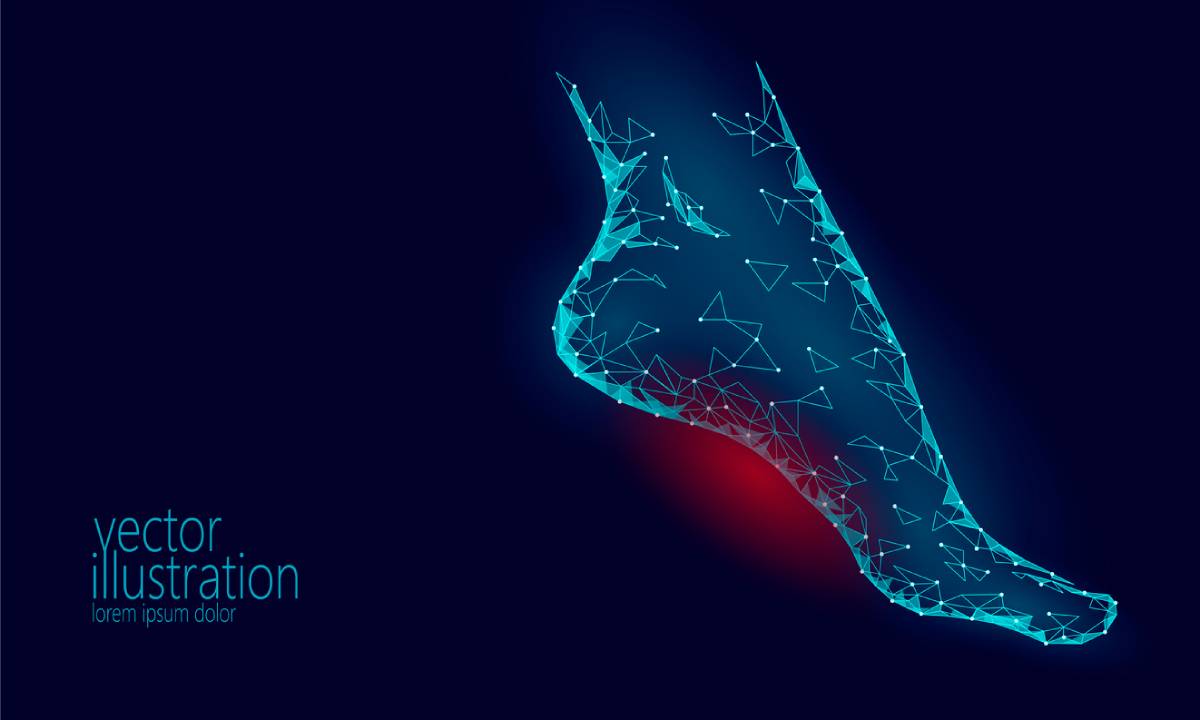Heel pain is a relatively common medical complaint that can affect people regardless of their age and lifestyle habits. Unfortunately, heel pain itself does not typically point to a clear diagnosis, and your heel doctor in California will want to identify the root cause before starting a heel pain treatment plan. Let’s look at the top 5 common heel pain origins.
5 Common Heel Pain Origins
The good news is that diagnosing heel pain doesn’t usually require many tests. Your doctor can usually narrow down the potential suspects by asking you detailed questions about your pain, including when and where you experience it most. While imaging may be required in some cases, you can generally expect your heel doctor to find one of these five common causes of heel pain.
Plantar Fasciitis
Plantar fasciitis is the medical term used to describe a condition affecting the tendon that stretches from the ball of your foot through the heel. This tendon is known as the plantar fascia, and it is responsible for supporting the arch of your foot.
Unfortunately, it is possible for this tendon to be overworked. The increased strain on the plantar fascia causes it to become inflamed and painful. Usually, this pain is located towards the back of the tendon, at the bottom of your heel.
Bone Spur
Bone spurs on the heel often exist as a result of plantar fasciitis. But it is possible for them to form on their own. A bone spur is essentially a calcified growth. That is, an extended nub off the back of your heel that forms in response to friction.
It’s kind of like a callus forming on the bone. While bone spurs aren’t always painful, they may rub against more sensitive tissue. In these cases, they can cause pain. Now, heel spurs usually form along the underside of the heel, causing discomfort similar to plantar fasciitis.
Heel Bursitis
Heel bursitis is a condition that affects the back of your heel. It is essentially the inflammation of the fluid-filled sack that is intended to cushion the bone, ligaments, and muscles that come together at the back of the heel.
Sever’s Disease
Sever’s disease is further down the list because it only affects children. It most frequently occurs in male children 10-15 years old and female children 8-13 years old. Because that ends up when they prove most likely to go through intense periods of growth.
Sever’s disease occurs when the heel bone grows faster than the surrounding tendons. It is often exacerbated by physical activity, which is why young athletes are most likely to be affected. Fortunately, it will resolve on its own as the child’s growth stabilizes.
Calcaneal Fracture
Breaking your heel bone isn’t that common, but it does happen. If you are feeling heel pain, then it is more likely to be caused by one of the conditions listed above. Even so, your doctor may take an x-ray to rule out a fracture if your symptoms are sudden or associated with a traumatic event.
Treating Common Causes of Heel Pain
For the most part, common causes of heel pain can usually prove treated by using supportive orthotics and physical therapy. The one exception of course is an actual fracture, which will require more direct intervention.
With all other common causes of heel pain, your doctor will likely try the least invasive approach first. Depending on your situation and the diagnosis, your treatment may include some pain relievers, anti-inflammatories, orthotic footwear, and regular stretches with periods of rest from intense physical activity.
After several months of dedicated treatment, your doctor may consider a surgical approach if your condition doesn’t respond well. While surgery is far from ideal, we do have access to less invasive options with foot keyhole surgery. Talk to your heel doctor to learn more.
